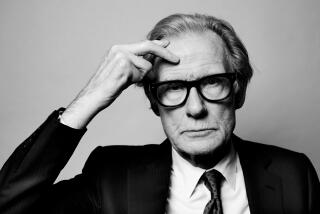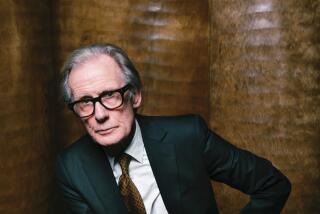Hugh Nibley, 94; Mormon Scholar, Professor and Author
- Share via
Hugh Nibley, a Mormon scholar, historian and gadfly who defended his faith yet openly criticized what he saw as many members’ conformity and materialism, has died. He was 94.
Nibley died Thursday in Provo, Utah, in the small, green house where he lived for 50 years. He had been in steadily declining health and died of natural causes.
An informal consultant to officials of the Church of Jesus Christ of Latter-day Saints, the Brigham Young University professor emeritus of ancient scripture was frequently asked to explain Mormon teachings. He did so eloquently and with detailed footnotes.
Nibley repeatedly derided Mormons’ fondness for large homes, hunting and what he called kitschy church art, literature and music.
But he was equally erudite in his defense of orthodox Mormon religion, devising answers through academic research on the church’s sacred documents. He particularly concentrated on the Book of Mormon and the Pearl of Great Price. The latter is a collection of writings by church founder Joseph Smith.
Nibley spent much of the last 20 years studying one section of the Pearl of Great Price: the Book of Abraham, which was Smith’s translation of an ancient Egyptian papyrus he obtained in 1835. Missing after Smith’s death, the papyrus was located in the 1960s at New York’s Metropolitan Museum of Art and returned to the church in 1967.
Although modern translations of the hieroglyphics led some scholars to view the document as a common funerary papyrus, Nibley disagreed. He planned to write a book about his Abraham research, which he had titled “One Eternal Round.”
Nibley was embroiled in controversy in recent weeks after one of his daughters, sociologist and therapist Martha Nibley Beck, charged that her father subjected her to ritual sexual abuse when she was a child. The book, “Leaving the Saints: How I Lost the Mormons and Found My Faith,” which strongly criticizes the Mormon Church and other members of her family, is scheduled for publication Tuesday by Crown, a division of Random House.
Beck, author of the bestseller “Expecting Adam” and a self-help columnist for Oprah Winfrey’s O magazine, said she recovered memories of the abuse during therapy sessions in the early 1990s.
Her seven siblings have disputed her accusations and issued a signed statement, saying: “We are saddened by the book’s countless errors, falsehoods, contradictions and gross distortions.” Beck said her father also denied her claims when she confronted him with them four years ago.
The episode was a sad final chapter in the long career of a man admired for his knowledge, candor and wit.
Nibley, who was fluent in 14 languages and wrote 15 books as well as hundreds of articles, was the subject of a well-received 2002 biography by his son-in-law Boyd Jay Petersen, “Hugh Nibley: A Consecrated Life.”
Nibley’s first book, “No Ma’am, That’s Not History,” published in 1946, was a sarcastic rebuttal to Fawn Brodie’s critical biography of Joseph Smith, “No Man Knows My History,” and endeared him to church leaders. Other books in response to works that criticized the Mormon Church include “Sounding Brass” and “The Myth Makers.”
Born in Portland, Ore., to the son of lumber baron Charles Nibley, Hugh Winder Nibley was 11 when the family moved to Glendale, where his father, Alexander, was a developer and executive in the lumber business.
Enamored of the wilderness, Nibley spent six weeks by himself at the age of 16 wandering the forest near Crater Lake, Ore., living on berries and boiled wheat.
After a church mission to Germany and Switzerland, he earned a degree in history at UCLA and a doctorate in classics at UC Berkeley.
Nibley began his teaching career in Claremont and joined the Army during World War II. His linguistic skills soon propelled him into military intelligence.
Nibley was hired to teach history and religion at Brigham Young in 1946, even though officials expressed concern that he was already 36 and not married.
“I’ll marry the first girl I see on BYU’s campus,” he promised, according to a 2000 interview with the Salt Lake Tribune. Two days after he landed the job, he met 21-year-old Phyllis Draper, an employee in the housing office, and less than four months later they were married.
“That story is true,” he told the Salt Lake paper. “She was the first girl I saw.”
Other stories, some apocryphal, surrounded the legendary Nibley, who was known for his charming eccentricities and disdain for the trappings of wealth.
Food never mattered -- he subsisted on carrots and condensed milk in graduate school, and on oranges while teaching in Claremont. Throughout his life, he drove cars as much as 30 years old and wore secondhand clothes and rumpled hats, once donating money to buy a needy churchman a winter coat only to find out the coat was for him.
He dismissed the tale that as an undergraduate he read every book in the UCLA library, but he did -- his brother once verified -- drive to UCLA every day with a book propped on the steering wheel of his Model T.
Modest, unassuming and with no interest in any personal legacy, Nibley told the Salt Lake Tribune in 2000 that the only proper response to mention of his name might be: “Oh, him.”
Nibley, who taught until 1994, is survived by his wife, eight children, a brother, a sister, 24 grandchildren and two great-grandchildren.
More to Read
Sign up for Essential California
The most important California stories and recommendations in your inbox every morning.
You may occasionally receive promotional content from the Los Angeles Times.












